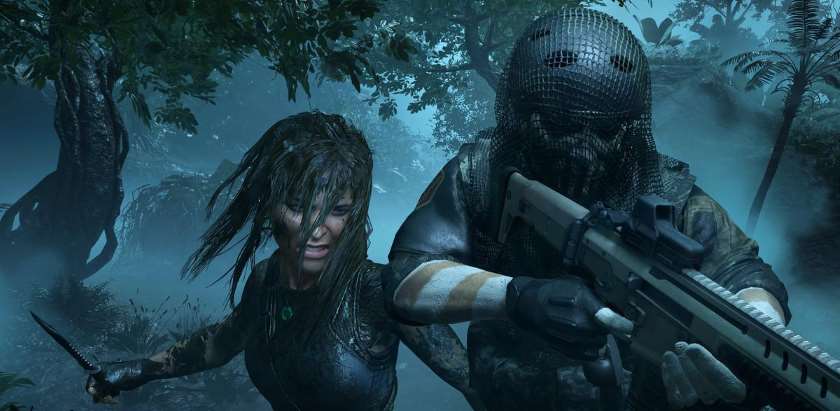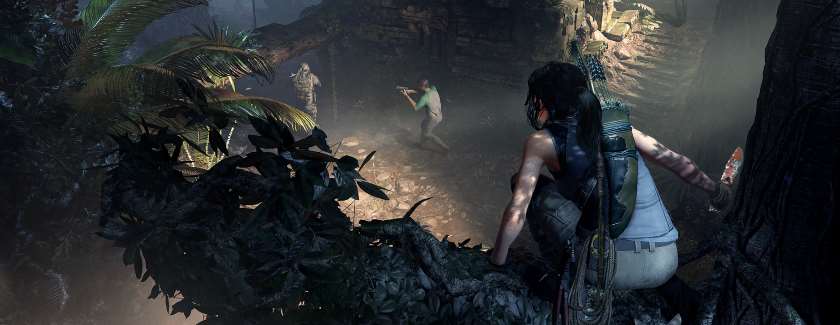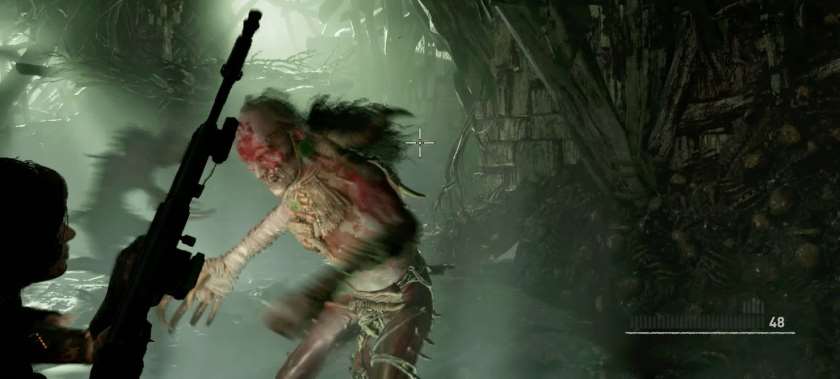Shadow of the Tomb Raider’s Limp-Wristed Shotgun and Other Problems

I don’t think Eidos Montreal had the best grasp of what made Nu-Raider work.
...what? Don’t ever use that phrase again? I mean, I thought it was clever, and… okay, okay! I won’t write or say it ever again! Cripes…
I stand by my point of Eidos Montreal’s slack, slippery grasp of the new Tomb Raider games, however. While I wouldn’t say either game is exceptional, there is a heart to those titles that could have been something phenomenal. I think half of Shadow of the Tomb Raider manages to tease us with what could be, but the end product is tarnished with the everything that no one was asking for. This week I’ll be focusing on the combat, where it excels, and where it disappoints.
The first thing to understand about Rise of the Tomb Raider’s superiority to its predecessor is that stealth combat was a lot more enjoyable than simply gunning down a horde of opponents. The varying alert levels meant that Lara could craft a tool that would put the enemy on guard, but not necessarily alert them to her location. A careful player thus had melee kills, silenced weapons, and explosives at their disposal.
Despite the varying tools of murder at her disposal, stealth was only an option as long as Lara’s position remained unknown. The moment she’s made every opposing soldier would be aware of her location. There was no more hiding or waiting for things to calm down. Simultaneously, using an explosive on alert enemies would often reveal her location as well. Lara has fewer tools in the tactical utility belt once foes become suspicious.
This leads to nearly every encounter becoming a shooting gallery over time. It was an improvement over the constant shoot-outs on the island of Yamatai, but it wasn’t yet the perfect system.
Shadow of the Tomb Raider, on the other hand, has greatly improved stealth combat that not only gives Lara more options for concealment, but also forgives the player their mistakes. Even if you can’t do a perfect stealth run of an arena it’s possible to weave between obstacles and find a new hiding spot. Enemies will return back down to alert, and eventually back to their regular patrols.
Both Rise and Shadow share the bad habit of burying many of its best and empowering stealth options in a skill tree, but to offer up a glass half-full interpretation this at least prevents the player from “being overwhelmed with options”.
...yeah, I don’t quite buy into that generous excuse, either. Especially when many of those upgrades have no impact on the game’s controls. It’s simply a series of features buried away so the player has an illusion of reward and customization in an unnecessary experience points system – a crime of the franchise as a whole, though largely just a hallmark of Tomb Raider’s place as a Western AAA game series post-2005.

The crime that is unique to Shadow of the Tomb Raider is that this stealth section shines brightest in the first and final thirds of the game, and even then only makes up a percentage of conflict-driven playtime. While stealth exists in the entire middle portion of the game, many of the arenas lack some of the most ideal terrain – namely trees – and have a bad habit of reducing Lara’s arsenal. This would perhaps be okay if the stealth combat were more frequent, providing the player a fresh sense of challenge after they’ve gotten comfortable with a fully equipped Lara.
Instead, and I’ll explore this in a separate essay, Shadow of the Tomb Raider tries to spread all of its content out equally. A move intended to prevent any one play style from over-shadowing another, but instead feeling like a bloated and padded experience. It is for this reason the mid-section is corpulent, its abundant love handles offering little for the player to love. Despite the cheesy and ineffective closing of Act Two, the return to proper stealth manages to elate the heart of the player. Finally! Trees! A proper arsenal! New enemy equipment forcing the player to approach the environment and their targets in a carefully considered fashion! The game is exciting again!
All the while Lara is “experiencing her darkest chapter”, a mood so poorly conveyed and so off the mark that it’s about as tone deaf as a frog singing opera.
The crime of the soggy mid-section is nothing compared to the travesty of forced combat against the cannibalistic savages roaming many of Peru’s tombs. These questionable inclusions for so many reasons force the player into the least appreciated and desired type of combat in the entire franchise.
Shooting galleries were the bane of players in both the first and the second Tomb Raider games. Rather than replacing all the shooting galleries with carefully designed stealth arenas, ensuring the player can always be “one with the jungle” as the marketing implies, the game shoves a gluttonous portion of shooting galleries down the player’s gullet in a concentrated chunk of the game’s middle.
Alright, why not play defense for Eidos Montreal, eh? Clearly there will be some players that enjoyed those shooting galleries, and those players will want to have a bit more spice in the combat scenarios. Critical feedback and player feedback do not always align, and a AAA studio is always going to have pressure to cater to as wide an audience as possible. It may result in a worse product the majority of the time, but the pressure from publisher and player is there.
Having just come off Tomb Raider and Rise, I can say that the timing window for dodging melee attacks in Shadow is well and truly… well… borked. Even after noticing that I couldn’t rely on my timing from the prior two games – played back-to-back and flush with Shadow’s release – there seemed to be no consistency whether I was dodging local cultists or savage cannibals. It seemed more a luck of the draw, though I would guess instead that Eidos Montreal made the timing more precise in an effort to “make this the hardest Tomb Raider yet”.

This awful screen grab is effectively why I’m trying to get better at taking screenshots. This is all I could find on Google.
Which becomes an unfortunate catch-all for any complaint, does it? “Ah, clearly you are more of a puzzles person! You should just turn the combat difficulty down next time!” Theoretically separating puzzles, exploration, and combat difficulties are an excellent move that would boost accessibility. Players can customize the game to fit their preferences rather than having to choose the setting that gets it closest.
Only the stealth sections feel just right on this normal difficulty. Were I to knock the combat’s difficulty down just for these irritating shooting galleries I’d no doubt have way too easy a time with the stealth arenas – the good ones, at least. In fact, those stealth arenas have encouraged me to try the combat on a harder difficulty level! ...right up until I recall these forced shooting galleries in which the shotgun smacks like a pre-stuffed Build-A-Bear to the face. Maybe if you’re lucky the enemy will stagger after catching some fluff to the eye.
What perhaps best illustrates the seeming cluelessness of Eidos Montreal is the inclusion of such combat in two of its optional tombs. A portion of gameplay clearly kept separate for players that preferred exploration and problem-solving, Eidos Montreal had the confused notion that these puzzle-oriented territories needed more combat in order to appeal to fans of gunplay.
At least, that’s the only reasoning I can come up with.
Now, I don’t believe Eidos Montreal is as clueless as I’ve suggested. It’s easy to point the finger and call someone a fool. It’s quite possible, however, that someone wearing a rather expensive suit at Square Enix’s Western headquarters said “Y’know what would make the game better?” and the developers had no choice but stifle their groans and nod their heads.
I don’t know the motivation. I only have the press circuit where the developers tried to sell the direction of Shadow of the Tomb Raider as a positive one intended to give each type of player more of what they wanted. As someone that never had much problem with the shooting galleries in the prior games – I have a history of being easy to please with games asking me to aim the crosshair in the direction of the opponent’s head – and found great joy in Rise of the Tomb Raider’s added stealth mechanics, I found Shadow of the Tomb Raider to be one step forward and two steps back over a ledge and into a ravine.
A move that their customization is still too limited to fix, and one that is tragically emblematic of the game as a whole.


